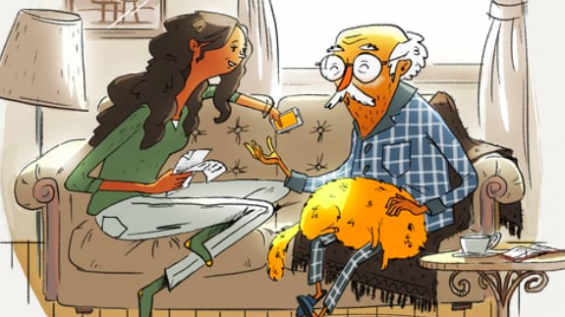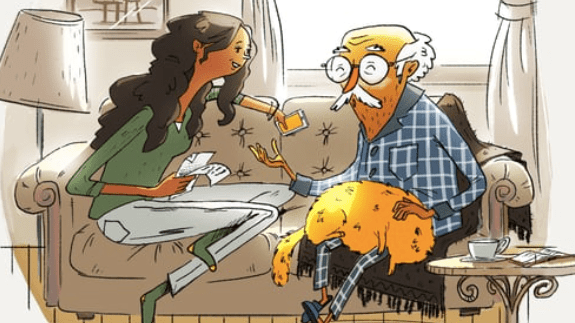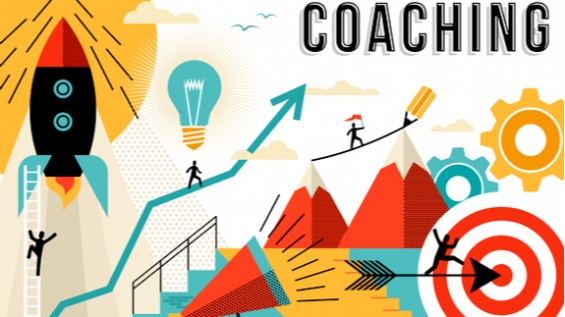
5 creative storytelling projects recommended by teachers, for everyone
Stories are powerful. Stories shape our ideas about what’s possible. What stories will your students choose to tell about the world? To expand your classroom toolkit of storytelling resources, try these 5 TED-Ed Innovation Project ideas with your students:
1. Listen to the voices of history.
Every human being sees world events from a unique vantage point. In Texas, TED-Ed Innovative Educator Lamar Schrader helped his students to connect with the living voices of history through a storytelling partnership with local elders. “Knowing what things my elder went through gave me a new way to look at various world events,” writes one of Lamar’s students. “I learned a lot about the Dust Bowl and the era of the Great Depression,” writes another student participant.
“Any chance to look at the world through another person’s eyes is an amazing opportunity.” — high school student, Texas
To bring this project to life, Lamar invited students to build a relationship with a senior citizen in the Lake Travis community, and to conduct a progressive series of 4-5 interviews with this person about their heroes, hard times, and high points. The final interview was recorded using the StoryCorps app and then uploaded to the Library of Congress for preservation. “As a scaffolding step in the process, students were assigned The Great Thanksgiving Listen, a similar project which allowed them to interview a grandparent over the Thanksgiving break. This allowed them the ability to practice asking and listening to a family member they were comfortable with, and also gave them practice using the StoryCorps app,” says Lamar. Other interview questions were inspired by the Legacy Project. In addition, “students were challenged to write two reflection papers that not only summarized stories from their elder partner, but also explored what lessons they had learned in the process. They were required to share these written thoughts with their elder partner as well, for their approval and to express gratitude for sharing.” Ready to try this with your students? Here’s a tip from Lamar: “Start by building a working relationship with the directors of senior living facilities in your community. Ask for their help and for their willingness to work with students, which will require patience, grace, and coaching.”
2. Create a school legacy project.
Do you know the history of your school? In Argentina, TED-Ed Innovative Educator Yau-Jau Ku decided to document the rich heritage of his 80-year-old international school, Asociación Escuelas Lincoln. To record memories of the school, students used the StoryCorps app to interview alumni. “The main objective was to see if this particular project could capture the elusive ‘special sauce’ identified by so many within the Lincoln community,” he says. The final result? A multimedia school portrait that incorporates photos, documents, and audio clips about the school’s past, present, and future. The coolest part of this project is listening to the recorded audio clips with students, says Ku.
“The ability to go back and listen makes this a living museum.” —Yau-Jau Ku, educator, Argentina
3. Bring storytelling events outside.
Education doesn’t stop at the classroom door. In Serbia, TED-Ed Innovative Educator Bojana Golubovic encouraged students and teachers to share their ideas with the community through live storytelling, digital storytelling, and creative writing on given issues. Her goal? To help students develop their creativity, communication, critical thinking, and collaboration skills. One tip: Aim for “big thoughts, small steps. No matter how many problems are there to be solved in the world, the only way they could be solved is by solving the problems in your surrounding,” she says.
4. Make a video tour of local landmarks.
“Everyone you will ever meet knows something that you don’t.” — science educator Bill Nye. In Korea, TED-Ed Innovative Educator Sunkyong Choi demonstrated the truth of this idea with a video storytelling project. In this project, students take the viewer on a walking tour of local landmarks, sharing personal stories along the way. Each video is narrated in English, with English subtitles. The end result is an engaging introduction to what students care about in their school and community. The idea itself is easy to replicate elsewhere. One tip: if you’re not quite ready to have your students create a video tour of their school and local landmarks, try starting with a community map project.
Aim for “big thoughts, small steps.” —Bojana Golubovic, educator, Serbia
5. Build a culture in which everyone’s story matters.
Storytelling can be a powerful tool for change. In Minnesota, TED-Ed Innovative Educator Susan Herder led a video storytelling project to create a more inclusive school culture. After interviewing a diverse group of staff, students, and teachers, students created a narrative of their school that defines diversity as a school strength. Ready to try a similar video storytelling project in your school? Here’s a tip from Susan: “Provide students with multiple ways to record their interviews. This places an emphasis on the information they gather, instead of creating the perfect video,” she says. “The message is what is important.”
This article is part of the TED-Ed Innovation Project series, which highlights 25+ TED-Ed Innovation Projects designed by educators, for educators, with the support and guidance of the TED-Ed Innovative Educator program. You are welcome to share, duplicate and modify projects under this Creative Commons license to meet the needs of students and teachers.
Art for this piece was created by Kirill Yeretsky for the Great Thanksgiving Listen from StoryCorps




Amazing content. Thank you for sharing, you’re really an example in delivering free access, high quality, inspiring education. The world needs more of this.
Leroy – student Social Work